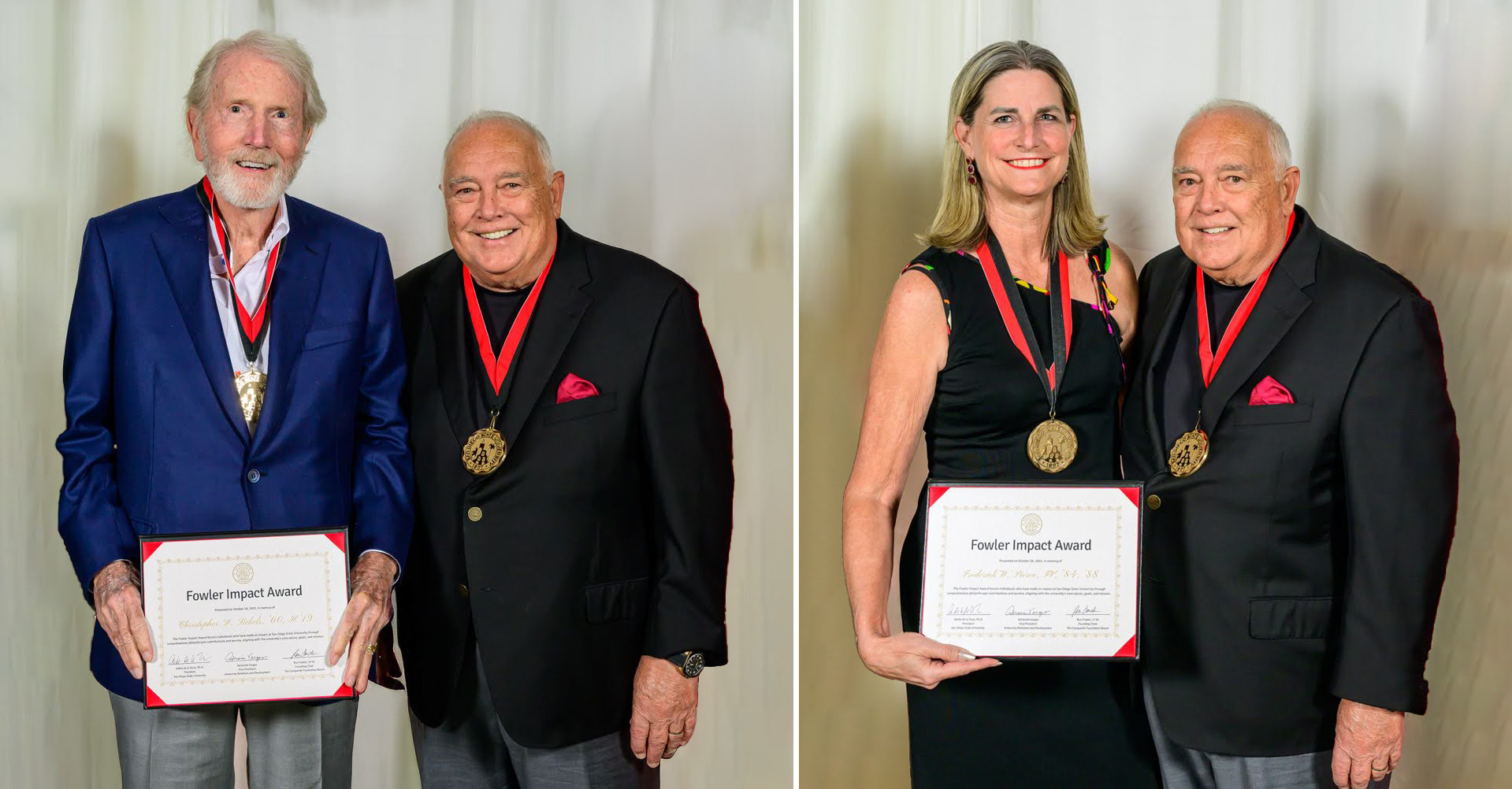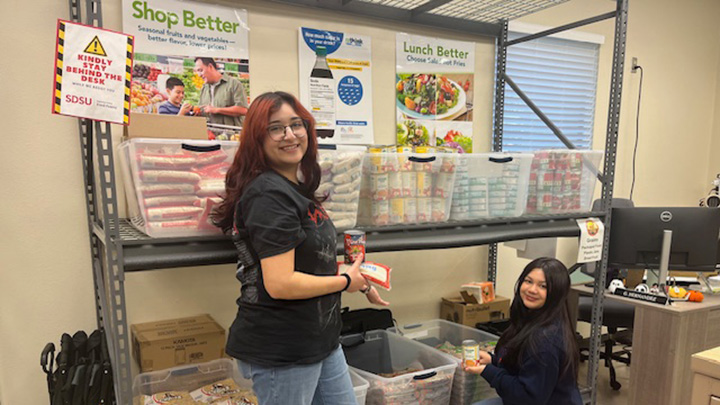Illumination in Education
SDSU's Matt Anderson is changing the face of online learning.

Is it magic? Or is it physics in action?
Matt Anderson, a physics professor at San Diego State University, together with a team of engineers from SDSU's Instructional Technology Services are defying instructional norms with the introduction of a unique learning tool.
The innovation — dubbed Learning Glass — is an LED-lit glass board that faculty can use to write on or project PowerPoints and video, while maintaining eye contact with their students.
The creation of the Learning Glass was spawned by Anderson's dissatisfaction with traditional online learning. As an instructor who embraces the shift toward online classes, Anderson was uninspired by the current standard of online learning, which typically consists of a PowerPoint with a voiceover from a professor.
"Online class structures always seemed really boring to me," Anderson said. "I started working video into my online classes, but I was writing on a board with my back to the students. I wanted to find a way to maintain face-to-face contact with students.”
Thus Learning Glass was born.
With funds from an SDSU President's Leadership Fund grant, Anderson used side lighting on low-iron shower glass to create a see-through "white" board. This allows neon dry-erase markers to become highly visible.
Students are able to observe the nuances of problem-solving as their professor teaches while facing them. With a horizontal “flip” of the image, Learning Glass has the visible presence of a whiteboard.
Technology and education
Though the innovation is high-tech, Anderson stresses that it is very similar to traditional chalkboard instruction.
“If you’re a traditional lecturer — as in someone who uses a chalk or whiteboard — using Learning Glass isn't that different," Anderson said.
"We need chalk and whiteboard, particularly in fields such as mathematics and physics, to work out problems, and as students, they need to follow along. Here’s a way you can do that with no more difficultly than delivering a traditional lecture because the technology does the image-flipping for you.”
Learning Glass technology is available to both students and faculty through a studio set up on campus.
"When designing online learning, a main goal is to use a mix of synchronous and asynchronous tools and techniques to maximize interaction and student engagement," said James Frazee, SDSU's senior academic technology officer and director of ITS. "Learning Glass supports this goal by humanizing the experience."
Learning Glass in action
The project was designed to make lectures more lively and engaging for both instructors and students; Anderson uses it for both online and "live audience" classes.
"Visual learners will benefit greatly from this concept," said Megan Murphy, a senior studying chemistry. "Learning Glass offers the chance to not only learn, but also build and recap."
ITS also enabled Learning Glass to feature live-stream capabilities and the ability to use clicker technology.
"They can see my facial expressions, see when I’m thinking about something in particular, they can get the intonation from my facial cues,” Anderson said.
But the live-streaming aspects of the technology won't replace face-to-face learning — Anderson aims to create courses that are a hybrid between online and "live audience" experiences.
"Presenting in front of a 'live audience' makes it a better experience for everyone — students can ask questions the folks watching at home may have, and I give better lectures when I'm lecturing to people instead of a camera," Anderson said.
Going live
The use of the Learning Glass has been well-received within the academic community.
The University of California, San Diego has adopted the technology, as well as a number of California State University campuses, including Northridge and San Jose. Although the technology is aimed at higher education's push toward online learning, Anderson sees the potential for all grade levels.
Teachers across SDSU's campus have embraced the technology, including professors from the College of Business, College of Arts and Letters and College of Sciences.
Catalina Amuedo-Dorantes, an economics professor, used Learning Glass in her summer session labor economics class.
"My class requires a lot of formulas and graphs, and using Learning Glass was a fun way of presenting the material," she said. "It makes lectures more personal than PowerPoints. Students could ask questions live and I could address them. You can't do that with traditional online learning."


